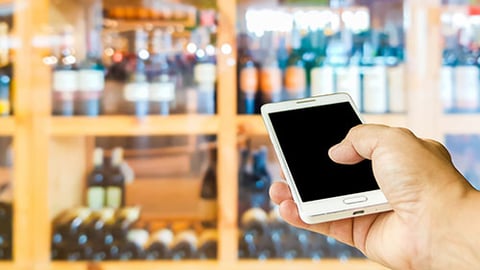Why Identity Verification Is Coming to Grocery Retail
The grocery retail industry was already undergoing a massive shift after a slow start to become one of the hottest sectors in retail for digital transformation. The coronavirus has accelerated the transformation at a breakneck pace as American consumers adopt online shopping and self-checkout in record numbers to maintain social distancing. Grocers are now quickly modernizing their customer experience with new technologies both in-store and online.
The way consumers shop has been evolving for the past decade. Before the coronavirus, studies found that we are shopping more frequently but with smaller basket size, making the ease-of-use and convenience of self-checkout more attractive. Younger, technology-savvy consumers, particularly working parents, were already opting for e-commerce driven options like click-and-collect curbside pick-up or same day grocery delivery. Grocers were rolling out these features in moderation, using self-checkout, click-and-collect and grocery delivery to reduce wait times, improve fulfillment and create a frictionless customer experience.
Even with these efforts, top grocery retailers have been under continuing pressure from the master disruptor and technology leader Amazon. In February 2020, the retailing giant opened its first, full-size Amazon Go Grocery store in Seattle — a completely technology-driven store. While the jury is out on how this new concept will fare in the long run, it — along with the offerings mentioned above — demonstrates an increasing propensity toward less human interaction to meet customer expectations for efficiency and now for safety.
Last year, Nielsen reported that online only accounted for 4% of grocery sales. Now downloads of Instacart, Walmart's grocery app and Shipt are increasing exponentially. According to a survey by analysts at Gordon Haskett Research Advisors, one-third of consumers purchased groceries online in the last seven days and 41% said they were doing so for the first time. Amazon said its online grocery order capacity has increased by more than 60% during the outbreak.
manual pitfalls
For grocery retailers who offer age-restricted products, such as alcohol and tobacco, these technology options can make it difficult to comply with current laws and provide a frictionless customer experience.
For example, in the self-checkout line, a worker is often called in to verify ID across several checkout stands. It has been said that age verification constitutes more than half of interventions at self-checkouts, slowing down the checkout lines for customers. Additionally, when it comes to digital channels, many grocery retailers and convenience stores are adding e-commerce options, but few have technology in place for age verification.
Stores and delivery services are relying on workers to check IDs manually. In all of these scenarios, manual ID checks are inefficient, disruptive to the process, and make it easier to commit fraud. Retailers rely on cashiers to verify IDs at the point of sale — cashiers who may be inexperienced or in a hurry and may be tricked by a good forgery.
Data shows that there is an increase in stolen identities, synthetic identities and payments fraud across the board, making it harder than ever for humans to discern if the person in front of them is who they say they are. Many grocers also offer in-store pharmacies with complicated scenarios for controlled substances that add risk.
While each state has its own laws, all states require that people be 21 before they can legally purchase alcohol. Anyone convicted of selling alcohol to a minor is likely to suffer financial penalties — fines that can amount to several thousand dollars per violation and the possibility of losing their state liquor license.
If you take into account the aforementioned in-store pharmacies, stores also have to manage distribution of controlled substances with much abuse, such as opioids and behind-the-counter drugs like pseudoephedrine, that are targets of fraud and can lead to hefty fines as well.
ID Verification software
Automated technology solutions offer faster and more accurate ID verification while also offering a means to know your loyal customers better. Using an ID scanner, kiosk or mobile app with explicit consumer consent, authentication software can extract biometric and alphanumeric data contained in an identity document, authenticate it and then confirm age and validity — for example, ensuring the ID isn’t expired.
Identity verification software eliminates manual screening errors, speeds up the document inspection process and significantly reducing employee training, operating costs and customer inconvenience.
To be more compliant, a quick two-step process would compare the ID photo to the person’s face via a quick selfie. Biometrics are becoming more readily accepted by consumers as the implementations become more frictionless. In the UK, supermarkets have begun experimenting with facial recognition technology at self-checkouts for age verification.
Consumers are becoming increasingly comfortable and adept at using their smartphones to conduct business and transactions, as we’ve seen with banking and when traveling.
Identity verification solutions can improve the modern grocery experience to remove friction from the checkout process and reduce fraud. This improved customer experience should translate into increased customer loyalty and stronger bottom line results for grocery retailers.







